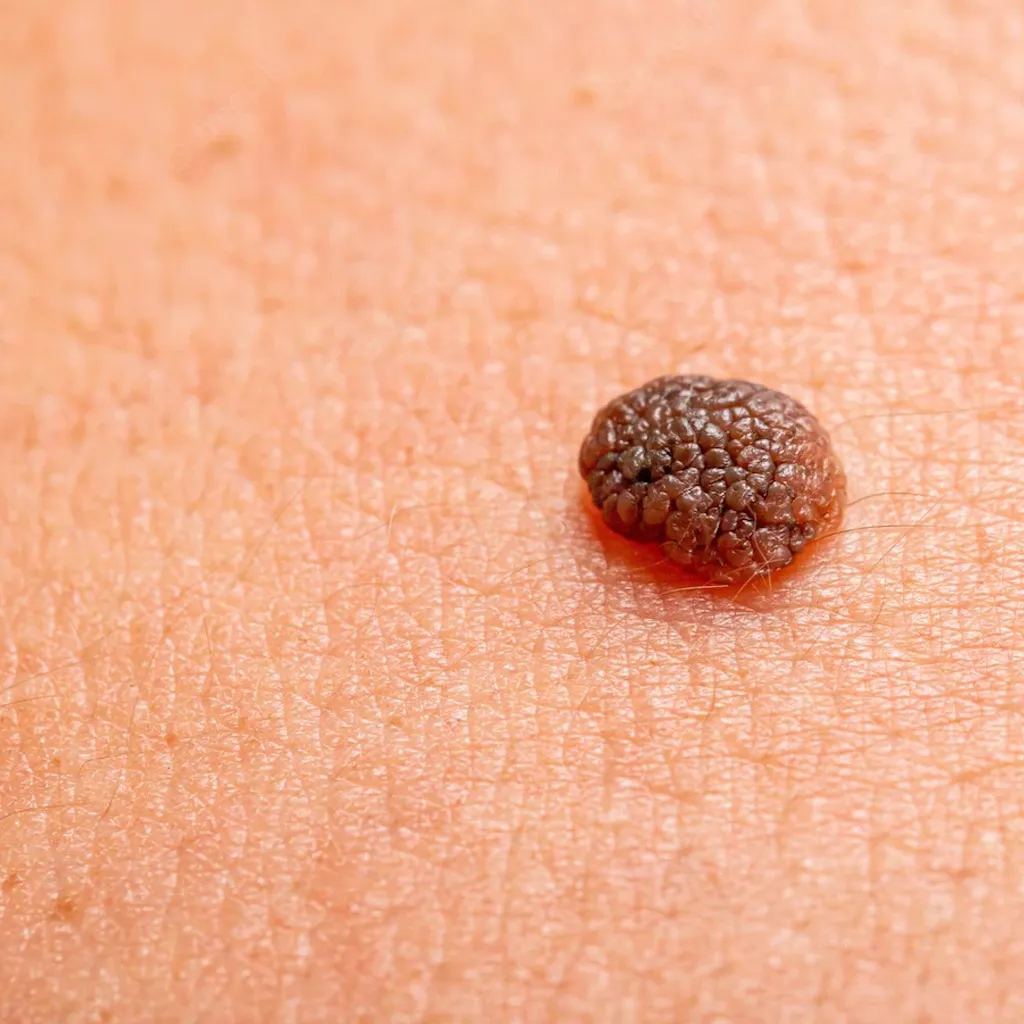
There are several skin lesions that are very common and benign (non-cancerous). These conditions include moles, freckles, skin tags and warts.
Moles are growths on the skin that are usually brown or black. Moles can appear anywhere on the skin, alone or in groups.Most moles appear during childhood and during the first 25 years of a person's life. People normally have between 10-40 moles by adulthood.As the years pass, moles usually change slowly, becoming raised and/or changing color. Sometimes, hairs develop in the mole. Some moles may not change at all, while others may slowly disappear over time.
Moles occur when cells in the skin grow in a cluster instead of being spread throughout the skin. These cells are called melanocytes, and they make the pigment that gives skin its natural color. Moles may darken after exposure to the sun, during the teen years, and during pregnancy.
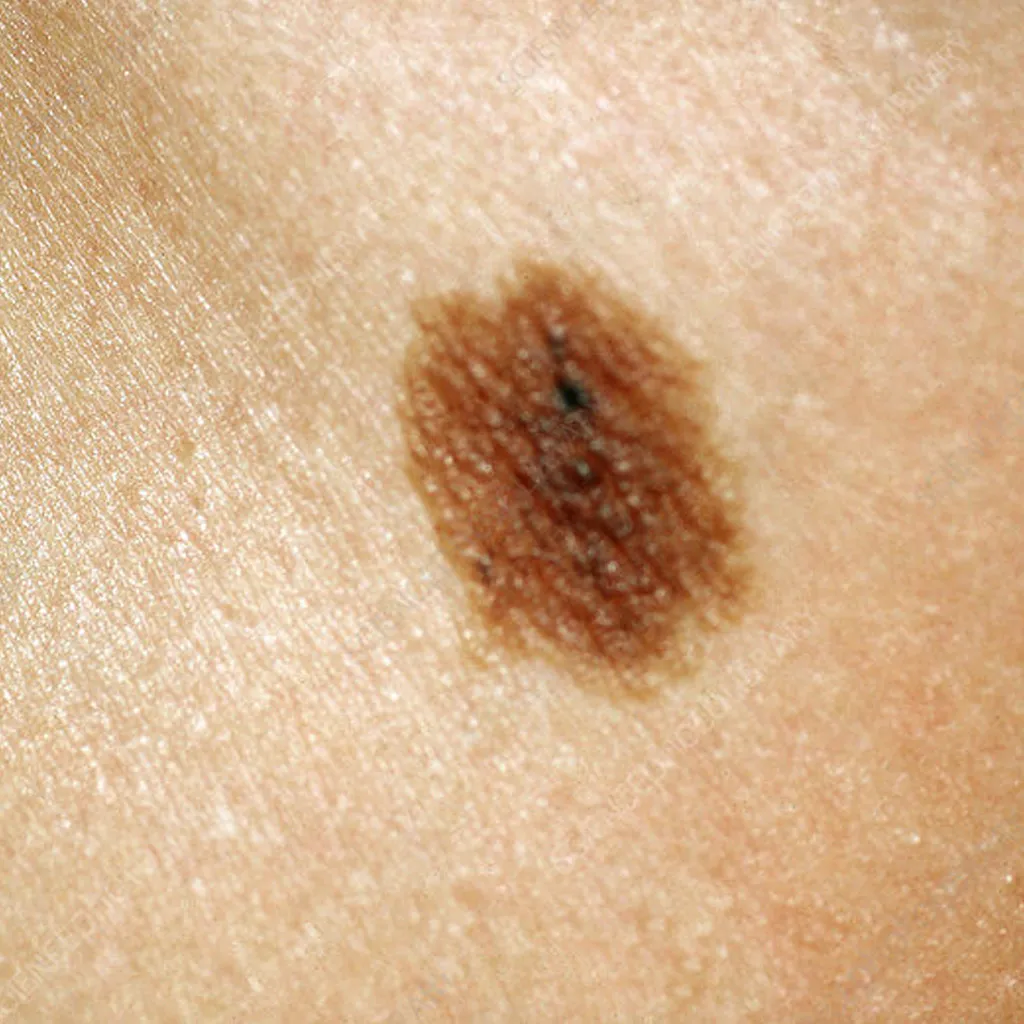
Congenital nevi are moles that are present at birth. Congenital nevi occur in 1% of persons. These moles are slightly more likely to develop into melanoma (cancer) than are moles that appear after birth. A mole or freckle should be checked if it has a diameter of more than a pencil eraser or any characteristics of the ABCDEs of melanoma (see below).
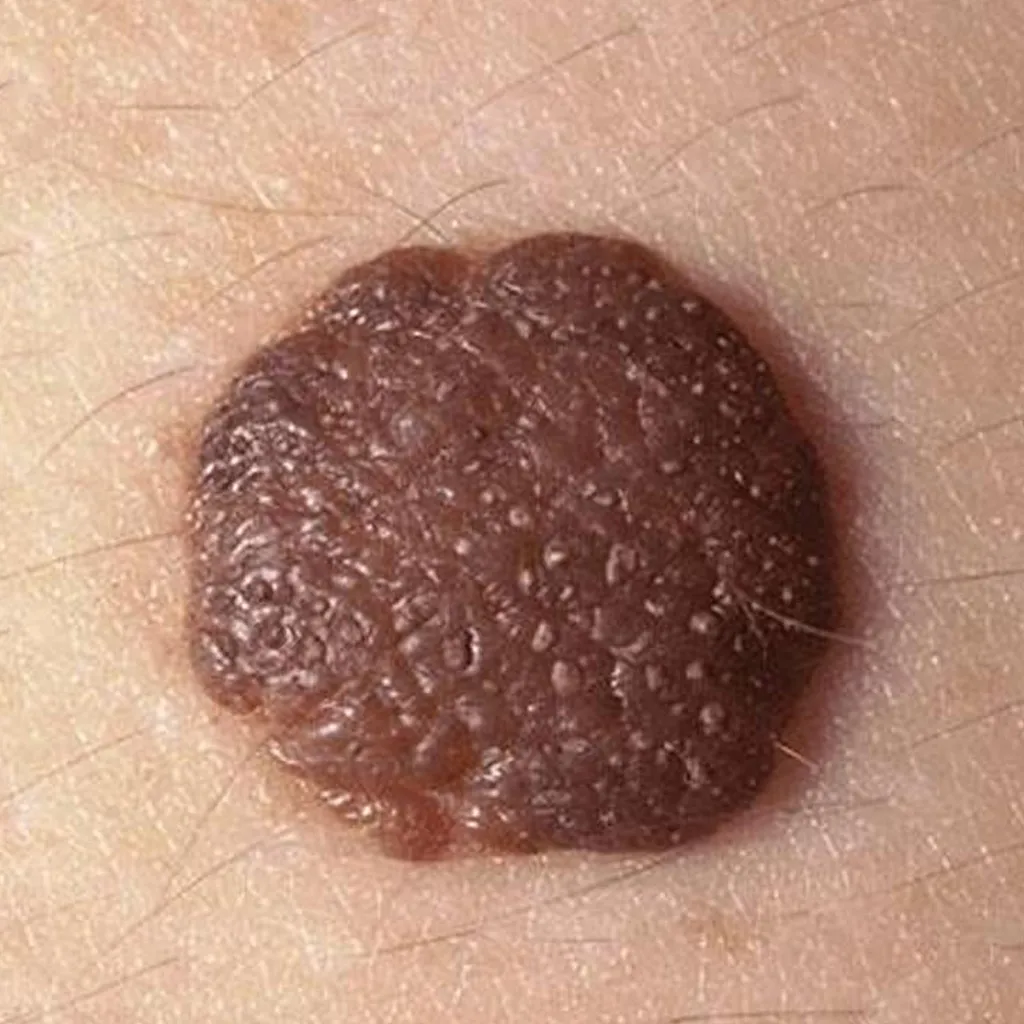
Dysplastic nevi are moles that are generally larger than average (larger than a pencil eraser) and irregular in shape. They tend to have uneven color with dark brown centers and lighter, uneven edges. These nevi are somewhat more likely to become melanoma. In fact, people who have 10 or more dysplastic nevi have a 12 times higher chance of developing melanoma, a serious form of skin cancer. Any changes in a mole should be checked by a dermatologist to evaluate for skin cancer.
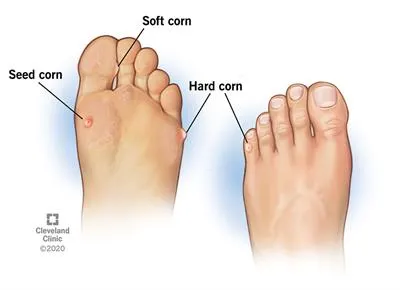
Corns and callus are thick hardened layers of skin that develop when skin tries to protect itself against function or pressure. They often forms on feat, toes, hands or fingers.
The vast majority of moles are not dangerous. Moles that are more likely to be cancer are those that look different than other existing moles or those that first appear after age 25. If you notice changes in a mole's color, height, size, or shape, you should have a dermatologist (skin doctor) evaluate it. You also should have moles checked if they bleed, ooze, itch, or become tender or painful.
Examine your skin with a mirror or ask someone to help you. Pay special attention to areas of the skin that are often exposed to the sun, such as the hands, arms, chest, neck, face, ears, legs, and back.
If a mole does not change over time, there is little reason for concern. If you see any signs of change in an existing mole, if you have a new mole, or if you want a mole to be removed for cosmetic reasons, talk to your dermatologist.
The following ABCDEs are important characteristics to consider when examining moles. If a mole displays any of the signs listed below, have it checked immediately by a dermatologist. It could be cancerous.
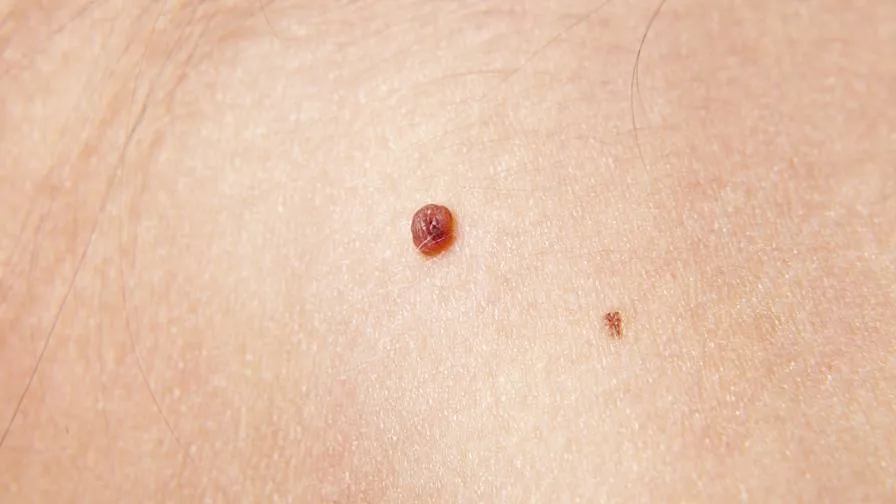
A skin tag is a small flap of tissue that hangs off the skin by a connecting stalk. They are usually found on the neck, chest, back, armpits, under the breasts, or in the groin area. Skin tags appear most often in women, especially with weight gain, and in older people.
Skin tags usually don't cause any pain. However, they can become irritated if anything, such as clothing, jewelry, or skin rubs against them.
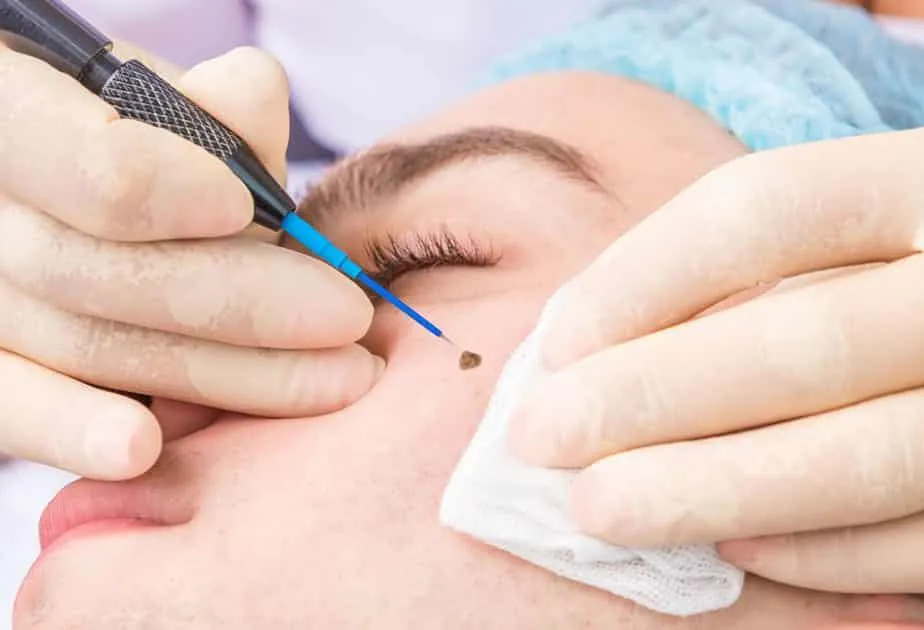
Warts are a type of skin infection caused by the human papillomavirus (HPV). The infection causes rough, skin-colored bumps to form on the skin. The virus is contagious. You can get warts from touching someone who has them. Warts most commonly appear on the hands, but they can also affect the feet, face, genitals and knees.
What are the symptoms of warts?
Warts vary in appearance. They
may look:
With advancement of technology Moles including DPNs, freckles, Wartsand Skin Tags are now removed using high precision CO2 Laser device. This is an outpatient procedure and does not require any specific preparation. The procedure is quick and painless. There is no down time. The freckles may be treated by TCA peel also. The dermatologist will decide the best treatment option for you.
The cost depends upon the size and number of lesions. It starts at 3000 only and averages around 5000 only.
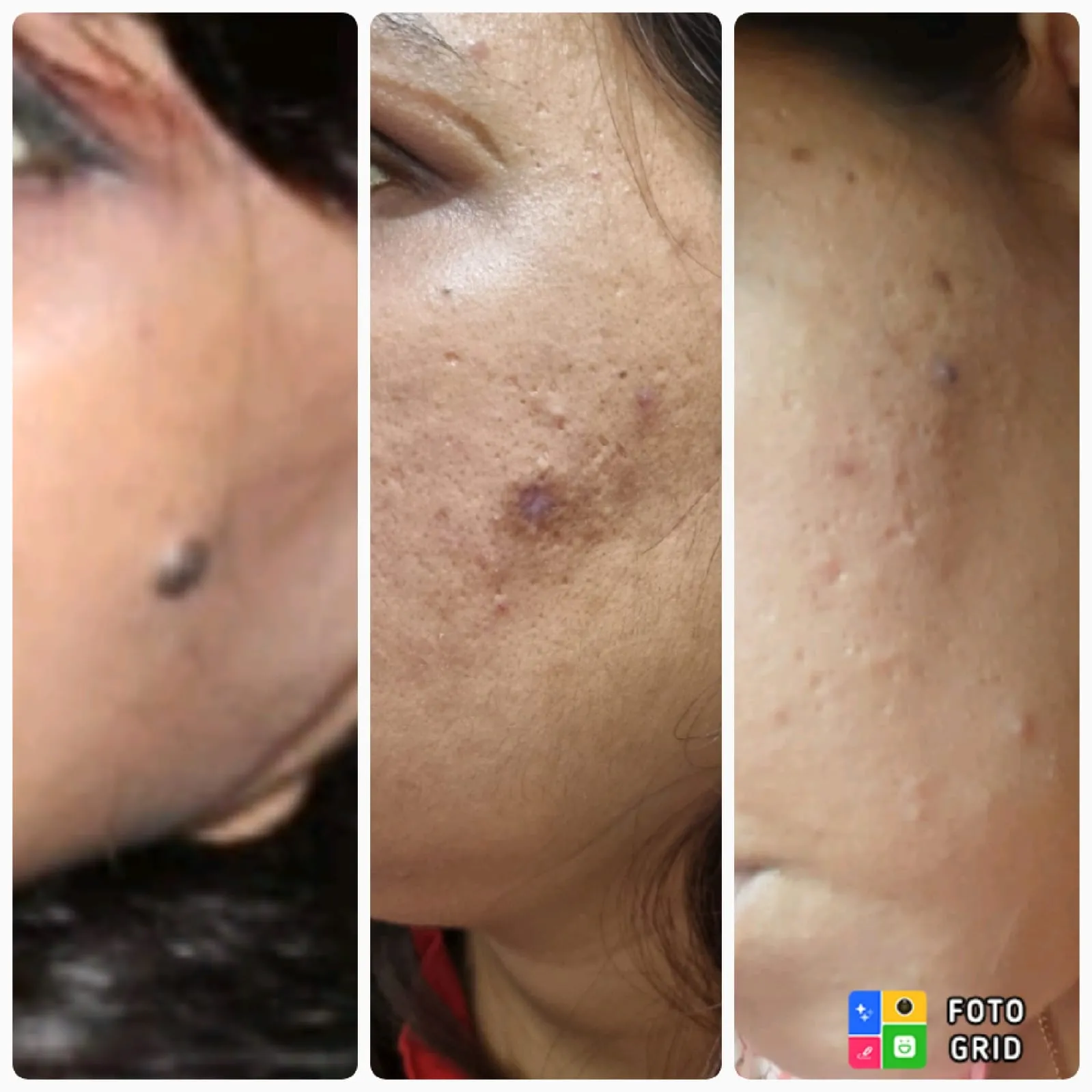
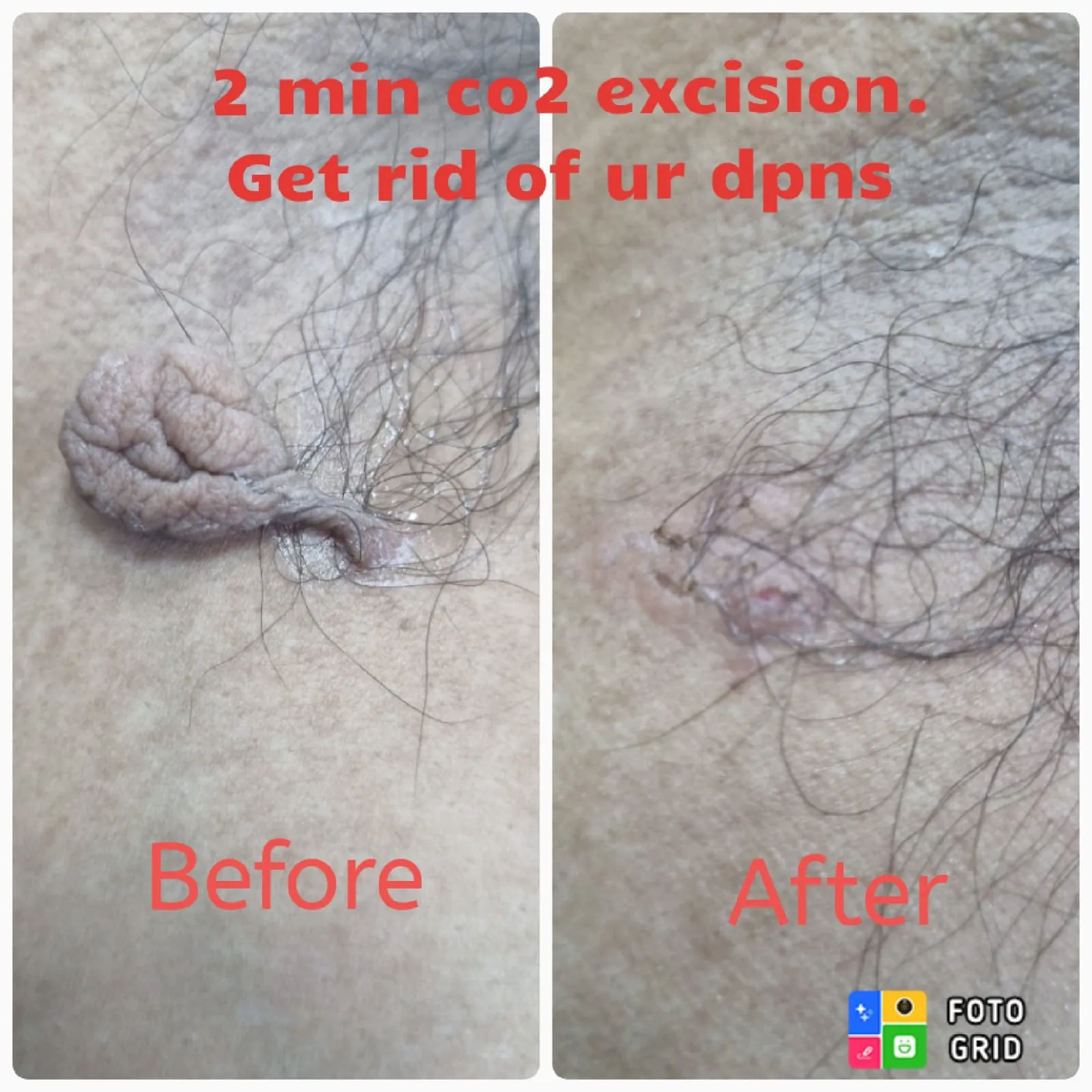
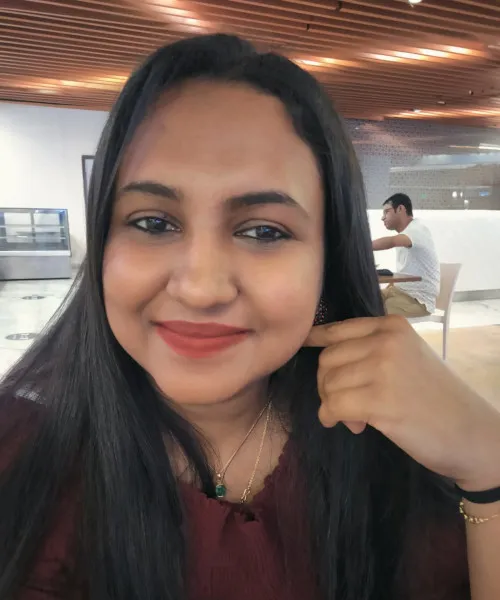
She is an Aesthetic Dermatologist and Cosmetologist. She has done MBBS and MD ( Dermatology & VD) from top medical college of Bengaluru KIMS. She also has a Certificate in Cosmetic Dermatology from Mumbai. She is also expert in skin lasers, fillers ,micro needling and permanent makeup.
SALTLAKE CLINIC TIMINGS
PARK STREET CLINIC TIMINGS




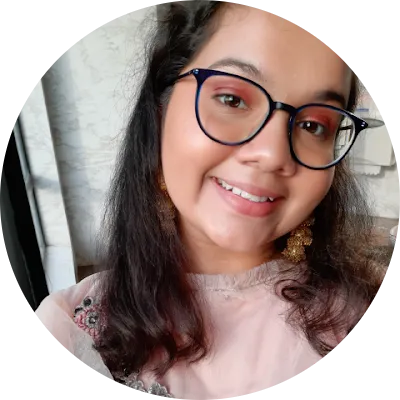
BF 189, 5th Cross Rd, BF Block, Sector 1,
Bidhannagar,
Kolkata, West Bengal 700064
+91 9433122662
ladermaskinclinic@gmail.com
GROUND FLOOR , 1 , LOUDON STREET, PARK STREET , KOLKATA 700016
+91 8910940714
ladermaskinclinic@gmail.com
 GO TO...
GO TO...